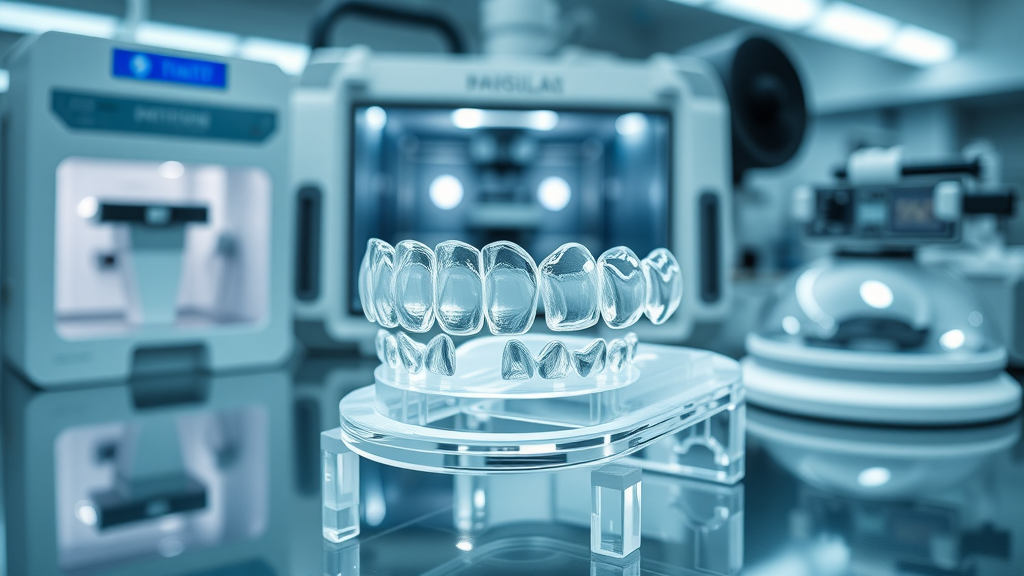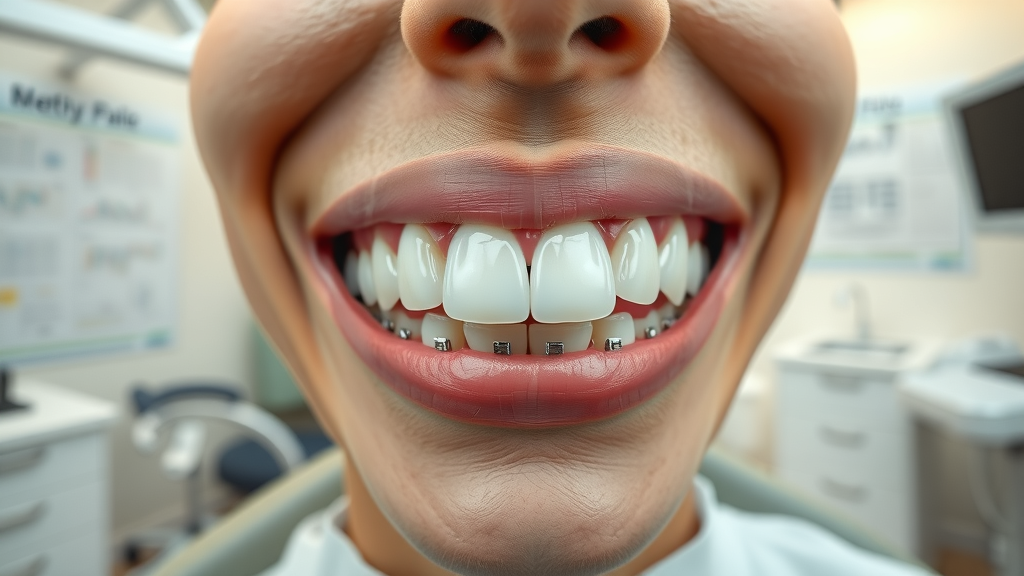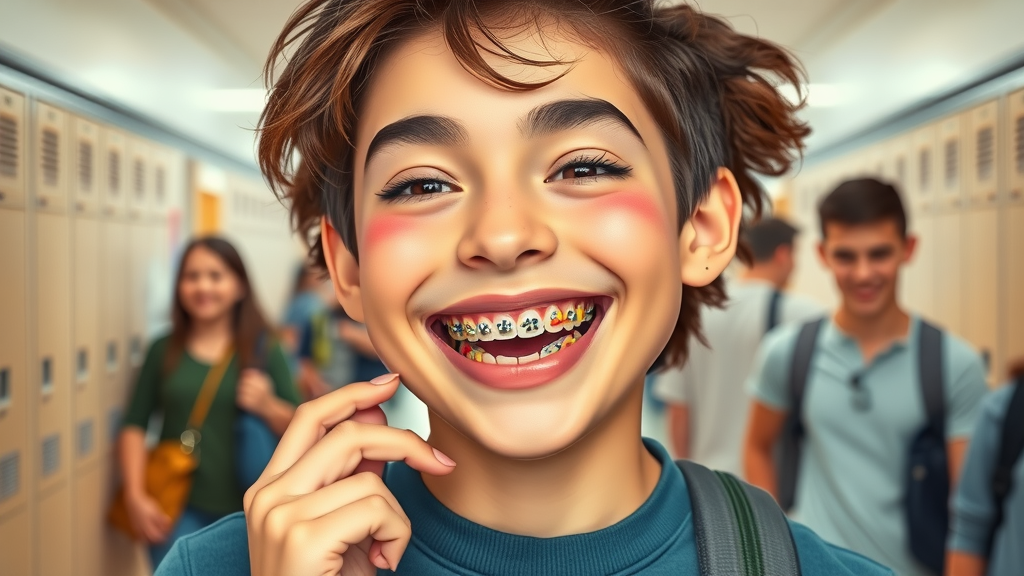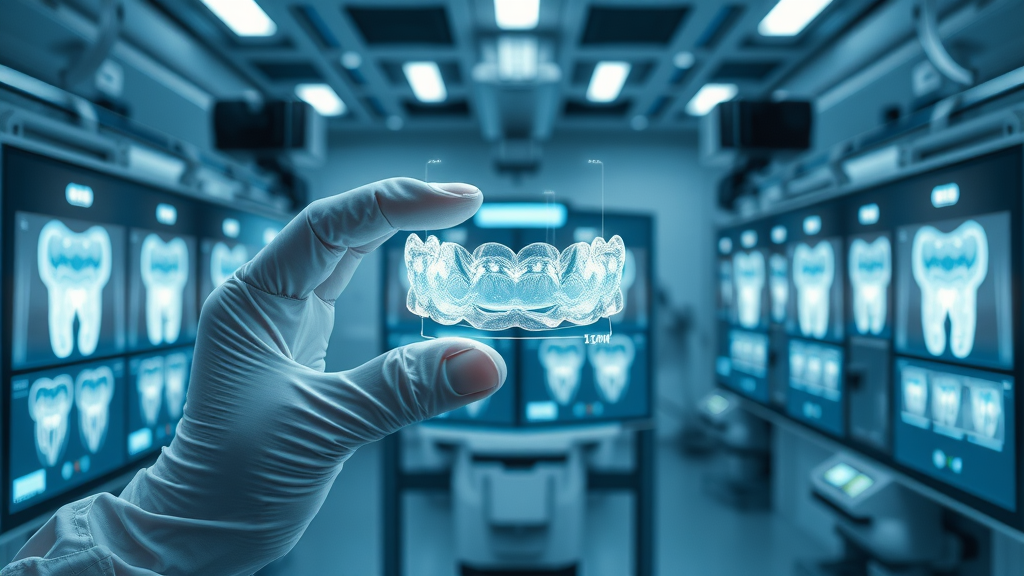Are You Still Deciding Between Braces vs. Aligners: Which Is Right for You in 2025?
Opening Hook: Caught between two of the biggest teeth straightening trends, wondering whether ‘braces vs. aligners: which is right for you in 2025?’ Let’s unmask the facts and find your perfect smile solution.

What You’ll Learn: Your 2025 Braces vs. Aligners Guide
Understand the latest advances in orthodontic treatment for both clear aligners and traditional braces
Compare benefits, costs, and future trends for braces and aligners
Discover which options work best for mild to moderate cases versus severe cases
Get answers to the most common People Also Ask questions for 2025
Braces vs. Aligners: Which Is Right for You in 2025? – A Comprehensive Overview
Definition and overview of orthodontic treatment: Orthodontic treatment, at its core, is about correcting misaligned teeth and jaws to deliver a healthy bite and beautiful smile. This process not only boosts confidence but also supports oral health in the long run. With advances in teeth straightening, modern orthodontic solutions — from clear aligners to traditional braces — offer more choices for kids, teens, and adults than ever before.
Growing trends: clear aligners, clear aligner systems, and traditional braces: By 2025, clear aligners have surged in popularity, especially among adults and teens seeking a discreet option. Systems such as Invisalign, and other clear aligner brands, lead the industry by delivering virtually invisible alternatives to wire-and-bracket braces. Still, metal braces, ceramic braces, and even clear or lingual braces (attached behind teeth) remain trusted solutions for a range of orthodontic issues, especially for complex cases and severe cases.
Why choosing the right method matters for long-term success: The success of any orthodontic treatment depends on matching the correct approach to your lifestyle, dental health, and the complexity of your bite problems. Consulting your orthodontist is crucial for a treatment plan tailored to your needs and ensures results that last a lifetime, whether you choose braces or aligners.
Clear Aligner Revolution: What’s New in 2025?
Latest technological advancements in clear aligners for teeth straightening: In 2025, clear aligners are smarter and more innovative than ever before. From precision-fit trays produced by 3D printing to smart monitoring apps tracking your tooth movement day by day, aligners have become a high-tech favorite in modern orthodontic treatment. Some systems even use AI-driven planning to forecast your smile progress and adjust your trays for even more effective results.
Benefits and limitations of clear aligners: Clear aligners are virtually invisible, easy to remove for meals, and comfortable enough to wear 22+ hours a day. They’re ideal for mild to moderate cases and can be a great fit for busy adults and teens prioritizing aesthetics and convenience. However, serious severe cases, bite problems, or complex tooth rotations might still require braces or hybrid approaches in 2025.
Who should consider clear aligner orthodontic treatment? If you have mild to moderate misalignment, are disciplined about wearing your aligners, and want a discreet solution for teeth straightening, clear aligners could be your ideal choice. Discuss your goals with your orthodontist for the best results with the latest clear aligner systems.
“Clear aligners now represent a mainstream option for mild to moderate orthodontic cases, offering discreet and comfortable teeth straightening.” — Dr. Adams, Orthodontist

Traditional Braces: Still Relevant or Outdated for Orthodontic Treatment?
Modern updates to traditional braces in 2025: metal braces, ceramic, and more: While clear aligners get much of the spotlight, traditional braces have seen impressive upgrades too. Today’s metal braces are lighter and smaller, minimizing mouth irritation. Ceramic braces blend with your teeth for low-profile visibility, and lingual braces hide behind teeth for near-invisibility. Digital planning tools and improved wires are making treatment faster and more comfortable for patients of all ages.
Pros and cons of traditional braces: Braces are a tried-and-true option for the full range of orthodontic issues, especially complex cases and severe cases. They don’t depend on patient compliance: the brackets bonded to the teeth and continuous force from wires ensure tooth movement as planned. However, braces require you to brush and floss with care to avoid plaque buildup, and they can place some restrictions on your diet.
When are traditional braces recommended for orthodontic treatment? Orthodontists recommend braces when dealing with significant crowding, rotated teeth, or complicated bite problems. For children, teens, or adults with complex case needs, braces may still offer the fastest, most effective treatment plan—and most insurance plans continue to cover their cost.
Benefits of traditional braces: Ideal for severe cases or complex teeth alignment. They are effective regardless of compliance and suitable for all ages.
Drawbacks compared with clear aligners: Braces are more visible, may cause some initial discomfort, and require more attention to oral hygiene routines.

Invisalign vs Braces: Comparing Costs, Treatment Time, and Effectiveness for 2025
Aspect |
Clear Aligners |
Traditional Braces |
|---|---|---|
Treatment Duration |
6–24 months (mild to moderate cases faster) |
12–30 months (varies by severity) |
Effectiveness |
Ideal for mild to moderate cases, some moderate cases |
Works for all cases, especially severe and complex teeth straightening |
Cost (average 2025) |
$3,000–$8,000; often depends on number of trays and case complexity |
$2,500–$7,000; ceramic and lingual braces cost more |
Maintenance |
Remove to brush and floss; clean aligners regularly |
Extra brushing, flossing tools needed; avoid sticky/hard foods |
Appearance |
Virtually invisible |
Visible metal, clear, or ceramic elements; color choices available |
Suitability for Severe Cases |
Rarely suitable |
Ideal for all, especially severe and complex |
How cost varies in 2025: Invisalign and clear aligners are often priced at the higher end due to cutting-edge materials and technology. Braces’ costs depend on bracket type (metal braces, ceramic, lingual) and how long the orthodontic treatment lasts. Insurance can sometimes help cover costs. Treatment time is shorter with minor misalignments; more complex cases take longer regardless of method.
Effectiveness in mild to moderate vs severe cases: For mild to moderate cases, clear aligners offer quick and comfortable correction. If your “complex case” involves bite issues, large gaps, or rotated teeth, braces deliver more control and consistent results.
Matching Braces vs. Aligners: Which Is Right for You in 2025? To Your Case
How orthodontists evaluate mild to moderate, moderate, and severe cases: Every smile is unique. Orthodontists use digital scans and X-rays to diagnose your alignment and bite, classifying cases as mild to moderate (slight crowding, spacing) or severe/complex (jaw misalignment, rotated teeth, deep bites). After this assessment, they suggest the method that promises the best outcome.
Suitability of braces or clear aligners for specific orthodontic treatment needs: Clear aligners are best for patients with few or no complex bite problems, while braces handle everything from small tweaks to major overhauls. Consider your age, daily routine, and willingness to keep up with aligners versus relying on braces bonded to the teeth.
“No single solution fits all — It’s vital for each individual to consider their unique lifestyle and treatment needs.” — Dr. Lee, Orthodontic Specialist
What Do Braces Look Like in 2025?
Today’s braces reflect years of tech and style upgrades. You’ll find ultra-slim metal braces, tooth-colored ceramic braces, and even braces attached behind your teeth (lingual). Wires are less noticeable, and custom color bands let kids and teens personalize their smiles with school or team colors. Comfort and care are improved — meaning less mouth irritation and easier cleaning for all ages.
Answer: Braces in 2025 reflect advanced, low-profile designs with custom color options and improved patient comfort, making them less noticeable and easier to maintain than ever before.

What Is the Future of Aligners?
The future for clear aligner systems is even brighter. New materials give better fit, comfort, and durability. 3D printed, custom aligners are made same-day at some clinics, and health apps allow orthodontists to check your progress remotely. Soon, more complex cases — even certain severe cases — will become eligible for aligner treatment, closing the gap between aligners and braces for a larger group of patients.
Answer: The future of aligners is personalized: rapid 3D printing and smart monitoring offer more efficient orthodontic treatment, expanding eligibility to a wider range of cases.

Is It Better to Get Braces or Aligners?
Choosing between braces and aligners depends on your orthodontic needs, age, and what fits your daily life. Braces are best for severe cases and those that require lots of tooth movement, while aligners are ideal for those who want something low-profile, easy to manage, and who can commit to wearing them properly. Patient testimonials show that both solutions can lead to a beautiful smile—it’s all about matching the method to the case and sticking to the treatment plan.
Answer: The best choice depends on your clinical needs and lifestyle preferences — orthodontic treatment is highly individual, so expert consultation is essential.
How Much Does Invisalign Cost in 2025?
Most Invisalign and clear aligner treatments in 2025 range from $3,000 to $8,000 nationally, depending on whether you need minor tweaks (mild to moderate cases) or extensive correction. Factors like treatment length, your provider’s experience, and if your insurance covers orthodontic treatment all affect the bottom line. Some clinics offer payment plans for easier budgeting, making advanced teeth straightening more accessible than ever before.
Answer: In 2025, Invisalign and other clear aligners typically range from $3,000–$8,000, but variables such as case complexity and provider expertise affect overall treatment cost.

Lists: Key Benefits & Drawbacks of Braces vs. Aligners for 2025
-
Main advantages of clear aligners (mild to moderate cases):
Virtually invisible and removable for eating or special occasions
Comfortable, with no metal brackets or wires causing discomfort
Easy oral hygiene and fewer dietary restrictions
-
Top reasons to choose traditional braces (severe/complex cases):
Work for all case types, including complex and severe
No risk of losing aligners — braces are fixed to teeth
Consistent tooth movement regardless of compliance
-
Drawbacks:
Clear aligners require discipline; not suitable for all severe cases
Braces may be visible and involve food restrictions or discomfort, and require more attention to oral hygiene
Tables: Braces vs. Aligners Comparison Grid for 2025
Feature |
Clear Aligners |
Traditional Braces |
|---|---|---|
Visibility |
Virtually invisible |
Visible (metal, ceramic, or clear) |
Comfort |
Soft edges, removable to eat/clean |
Fixed, may cause mouth irritation at first |
Price |
Higher for advanced systems |
Lower for metal, higher for ceramic/lingual |
Treatment Time |
6–24 months |
12–30 months |
Severe Case Suitability |
Rarely suitable |
Ideal (especially severe cases and bite correction) |
Maintenance |
Easy, removable for oral hygiene |
Extra brushing/flossing required |
Aftercare |
Retainers at night |
Retainers at night |
FAQs: 2025 Braces vs. Aligners – Your Most Pressing Questions Answered
How do I know if I need braces or aligners?
Consult with an orthodontist. Digital scans and an in-depth evaluation will determine whether you have a mild, moderate, or severe case. Aligners are usually a great fit for mild to moderate cases, while braces are best for complex or severe bite problems.Can clear aligners treat severe cases in 2025?
In 2025, clear aligner technology can treat more cases than ever, but truly severe cases may still need traditional braces or a hybrid approach. Innovations are pushing the boundaries, yet braces remain the best choice for certain tooth movements and jaw corrections.How long does orthodontic treatment take with either option?
Treatment time depends on the complexity of your case and how well you follow instructions. Clear aligners typically treat minor issues in 6–12 months and moderate issues in 12–24 months. Braces may take 18–30 months, especially for severe or complex cases.What’s new with metal braces in 2025?
Metal braces feature smaller, lighter brackets, more comfortable wires, and even AI-driven adjustments. You can choose fun colors and benefit from new materials that speed up treatment and make braces less noticeable.Are clear aligners comfortable for teens and adults?
Yes! Clear aligners are made with smooth, flexible material and are custom-fit for comfort. They’re a popular choice for adults and teens wanting a low-profile look and an easy way to brush and floss.What about aftercare for both treatment types?
After braces or aligners, you’ll wear a retainer to keep your teeth in place. Proper oral hygiene and regular orthodontic checkups are key to maintaining your beautiful smile for years to come.
Key Takeaways: Braces vs. Aligners: Which Is Right for You in 2025?
The right orthodontic treatment balances your dental needs, lifestyle, and personal preferences
Clear aligners offer comfort, discretion, and convenience, best for mild to moderate cases
Traditional braces are unbeatable for severe and complex teeth straightening needs
Ask your orthodontist about the latest treatment plan options, costs, and how new technology in 2025 can impact your smile journey
Always seek a trusted orthodontic professional for your unique case analysis
Conclusion: Your Smile, Your Choice — Take the Next Step in 2025
Braces vs. aligners: which is right for you in 2025? Tailor your orthodontic treatment based on lifestyle, needs, and future goals.
The technology and expertise available in 2025 ensure a brighter, healthier smile for everyone seeking teeth straightening.
Subscribe to Grand Strand Smile Spotlight for the Latest on Braces vs. Aligners: Which Is Right for You in 2025?
Your smile is worth it — and staying informed is the first step. Join hundreds of locals already following Grand Strand Smile Spotlight for updates, advice, and trusted care insights.
Subscribe now to get the latest Grand Strand orthodontic guides, tips, and updates — right to your inbox. No spam. Just smiles.
Want more expert-backed answers about braces, Invisalign, and local orthodontic care? Subscribe to Grand Strand Smile Spotlight and stay ahead of your smile journey.
A dynamic visual explainer featuring animations of clear aligners and traditional braces, showcasing the fitting process, patient before-and-after transformations, and expert commentary on orthodontic treatment in 2025.
Watch a time-lapse journey of actual patients using braces and clear aligners in 2025, highlighting the visible transformation of smiles over weeks and months.
Top orthodontists answer the most common questions about braces vs. aligners for 2025, providing insights on cases, comfort, costs, and new advances in the field.
In 2025, advancements in orthodontic treatments have significantly enhanced both clear aligners and traditional braces, offering patients more effective and comfortable options for teeth straightening.
For a detailed comparison of these options, the article “Clear Aligners vs. Braces: What’s New in 2025?” provides insights into the latest technological advancements, including AI-driven treatment plans and improved materials that enhance comfort and efficiency. Additionally, “Invisalign vs. Braces: Which Is Better?” offers a comprehensive analysis of the pros and cons of each treatment, helping you make an informed decision based on your specific dental needs and lifestyle.
If you’re serious about achieving the perfect smile, these resources will provide you with the necessary information to choose the most suitable orthodontic treatment in 2025.
 Add Row
Add Row  Add
Add 




Write A Comment